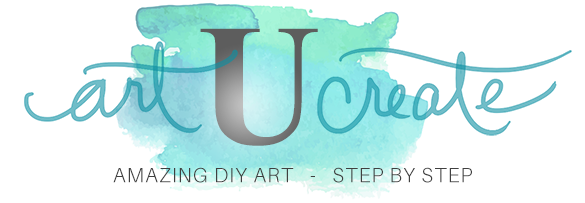How do you paint an adorable bunny? This acrylic painting tutorial shows you how- step by step! You’ll learn how to paint bunny eyes, how to paint soft realistic rabbit fur, and some great tips for working with acrylic paint.
Scroll down to watch the complete video tutorial, and be sure to check out the helpful tips for painting your rabbit in the section below the video.
You might also like this post showing how to paint a bird on canvas, or this one showing how to paint a fox.
you’ll need these supplies:
1. Good quality acrylic paint in these colors:
(Golden or Liquitex Heavy Body acrylics work well)
2. Glazing Liquid:
3. Canvas with a smooth texture
The bunny art in this tutorial was painted on a Frederix Pro Series Dixie Gallery Canvas in an 18 x 24 size.
4. A variety of brushes:
Royal & Langnickel Zen Series brushes from Michael’s were used in the video below. They are affordable fine art brushes that have several nice features–they’re synthetic, but their bristles behave like natural hair. They can be left to soak in water without fear of them swelling or cracking. They are also absorbent and will retain their shape, flexibility, and spring if you take care of them.
For painting an 18×24 canvas, these brush types and sizes work well:
watch the video to learn how to paint a bunny
How to Paint a Bunny Eye: begins at the 2:52 mark
How to Paint a Rabbit Ear: begins at the 5:03 mark
How to Paint Rabbit Fur: begins at the 8:08 mark
other helpful tips for painting your rabbit
- Choose a smooth canvas surface—not one with a rough weave or noticeable bumps. It’s easier to get soft, flowing, unbroken brushstrokes when your brush hairs can glide across a smooth surface.
- After painting, clean your brushes with an artist’s soap like this one. It comes in bar form with a fabulous peppermint scent, and it works well for removing all types of residue from your brushes, whether you are working with acrylic, gouache, ink or oil paint. It can also bring brushes back to life that you might have thought were too far gone to be useful any more.
- Use a watercolor pencil for tracing your bunny outline onto your canvas. When the wet paint comes in contact with the watercolor outlines, the markings will gradually dissolve and disappear. Much better option than using a #2 pencil—which is notorious for smudging, smearing, and leaving graphite residue in finished acrylic paintings. TIP: Use the same color watercolor pencil as the paint that you plan to use. So—if you are painting a soft gray rabbit, use a light grey watercolor pencil to do the outline. If you are painting a brown bunny, use a light brown watercolor pencil for tracing onto your canvas. Derwent makes a high quality, budget-friendly, watercolor pencil set of 24 gorgeous colors that come in nice tin. If you plan to do lots of work with watercolor pencils on their own and not for just transferring designs, opt for a professional, break-resistant set like this one from Derwent.
- Try inexpensive canvas paper for painting practice. Canvas paper is a great surface for experimenting and trying out new techniques (like painting fur) before you begin painting on your good stretched canvas.
- Keep an airtight container or zip-top bag on hand. If you have left-over wet acrylic paint or glaze on your palette after painting your bunny, you can seal it inside the bag/container to prevent it from drying out until your next painting session.
- Use great reference photos with good lighting and detail. These Shutterstock photos were used as references for the rabbit painting in this tutorial.


For the mushrooms and snail, these Shutterstock reference photos were used:


artUcreate is an Etsy, Michael’s, and Amazon Associates LLC affiliate.





